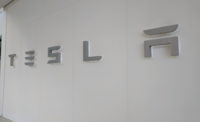Solar Roofing
Tesla’s Solar Business Continues to Decline in Q3 2023
Company lays blame on California's new net metering rules and high interest rates

Photo courtesy of Tesla, Inc.
Tesla’s solar business appears to be slumping, with the amount of solar it deployed in the third quarter dropping by 25.8% from this year's previous quarter.
According to the latest report from the electric car manufacturer and energy company, the amount of megawatts it deployed in Q3 was 49, down from 66 megawatts in the previous quarter. When compared to the same time last year, Tesla deployed 48% fewer megawatts (94 in Q3 2022). As it did in the previous quarter, Tesla laid the blame partly on a high interest rate environment.
“Sustained high interest rates and the end of net metering in California have created downward pressure on solar demand,” the company said in its earnings report.
During the Oct. 18 earnings call, CEO Elon Musk echoed these sentiments, saying that while Tesla is in a position to endure tough conditions, it is struggling with the current economy.
“If the macroeconomic conditions are stormy, even the best ship is still going to have tough times,” he said. “If interest rates start coming down, we will accelerate.”
In December 2022, the California Public Utilities Commission altered the rules for net metering for customers using rooftop solar systems. Net metering is when utility companies pay customers for excess energy they generate that are sent back into the grid. The new rules, which took place April 15, reduce the rates for net metering credits and encourages homeowners to purchase solar energy storage systems.
Tesla’s decline in solar is a far cry from previous claims made by Musk that Tesla would be producing 1,000 of its Solar Roof systems a week. As with previous reports, Solar Roofs were not broken out from the rest of its solar products.
The Solar Roof uses durable glass tiles with solar cells built into them instead of traditional solar panels, replacing a home’s roof with one that both protects the property and generates energy. The product has had a rocky journey since it was first announced in 2016, from the company making what Musk called “significant mistakes” when assessing how to install it on more complex roofs to a class-action lawsuit resulting in a $6 million settlement for customers experiencing price hikes when installing a Solar Roof.
Tesla’s energy storage business, on the other hand, is thriving. In Q3 2023, the company deployed 3,980 megawatt-hours, up 8.9% from the previous quarter and Tesla’s highest quarterly deployment ever. The numbers are even better when looking back to Q3 2022, where it deployed 2,100 megawatt-hours, resulting in a 90% increase.
The earnings report attributes this ongoing increase to its Megafactory in Lathrop, Calif., toward full capacity of 40 gigawatt-hours in its phase two expansion. Products like its Powerwall – a home battery bundled with the Solar Roof – and its Megapack are included in its energy storage offerings.
In Q3 2023, Tesla reported a total of $1.56 billion in revenue from its energy generation and storage division, up from $1.51 billion in Q2 and the $1.12 billion it made in Q3 2022.
“The energy division is becoming our highest margin business,” said Musk, adding it helps contribute “over half a billion dollars to quarterly profit.”
Looking for a reprint of this article?
From high-res PDFs to custom plaques, order your copy today!





